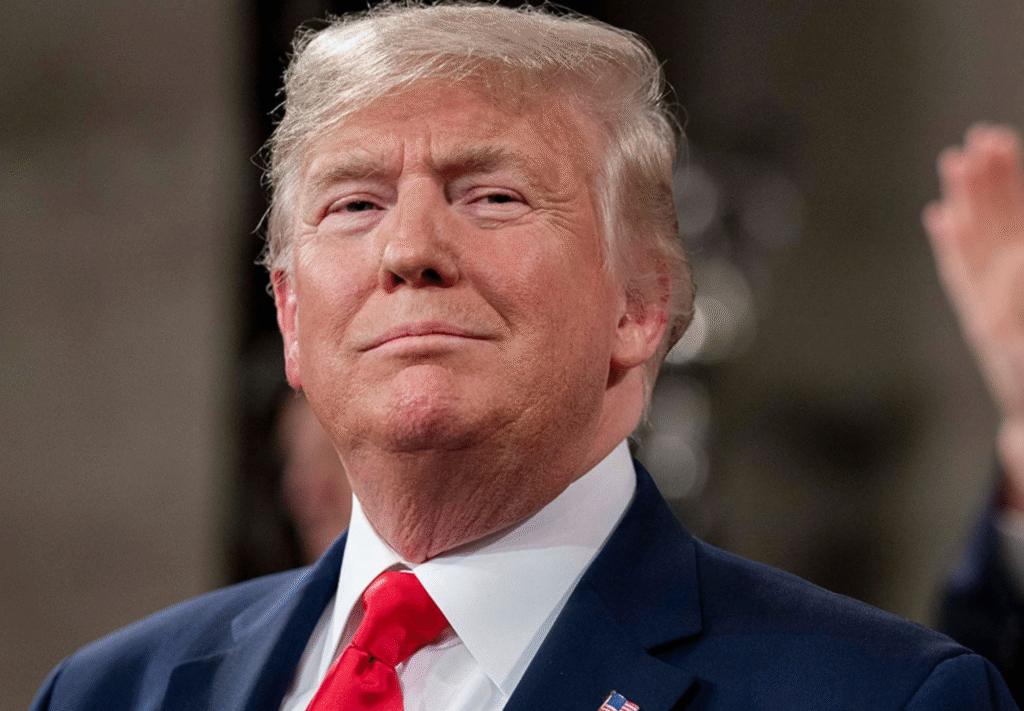World News
Apple confirms a Screen Time bug is causing settings not to stick on July 31, 2023 at 1:16 pm
Apple confirmed a Screen Time bug is impacting its devices, allowing children to go over the previously set time limits imposed by parents to continue to use their apps and games. The company acknowledged the bug in a comment published by The Wall Street Journal over the weekend, but didn’t offer a timeline for a fix.
Screen Time settings are a series of controls that allow parents and guardians to configure limits for their children’s use of Apple devices through Family Sharing. The adult family member can configure various controls, ranging from time spent on certain categories of apps, like games, to communication limits, to scheduled “downtime,” which only allows phone calls and apps the parent has approved. The latter is often used at the child’s bedtime so they’re not tempted to play games or check social media when they should be sleeping.
However, a bug with Apple’s Screen Time is causing parents’ settings not to be enforced, The WSJ reported.
“We are aware that some users may be experiencing an issue where Screen Time settings are unexpectedly reset,” an Apple spokeswoman told the paper. “We take these reports very seriously and we have been, and will continue, making updates to improve the situation.”
With the release of iOS 16.5, Apple said it had fixed a bug with Screen Time where “settings may have reset or not sync across all devices.” But the new report confirmed the bug is still causing problems in the public release of the iOS 17 beta.
The problem for parents, of course, is that kids won’t typically report that they have been given extra time on their devices. They’ll just happily continue to use the apps and games that were previously off-limits or that had only limited time allowances before. That means many parents aren’t even aware that the bug is impacting their family’s choices around device use.
Apple released its own Screen Time tools with the launch of iOS 12 in 2018, after first cracking down on third-party apps that provided a similar service. The company banned apps from its App Store, saying they relied on technologies that risked users’ privacy. Because iOS lacked any sort of system for Screen Time management, the apps had employed a variety of methods for managing screen time, including the use of background location, VPNs, and MDM-based solutions (mobile device management, a system designed to manage employee devices in the enterprise).
The company didn’t introduce a Screen Time API for developers of screen time apps to use by building on top of Apple’s tools until 2021, after many apps had already been put out of business.
The decreased competition in the Screen Time app ecosystem that resulted from Apple’s changes means parents who employ screen time management tools on their children’s devices are now often using Apple’s own tools to do so. So when that system breaks, it has a broader impact.
Meanwhile, the third-party apps that remain today are not free and often ship with additional tools for parents to use in order to justify their pricing. For instance, Qustodoio — an app mentioned in the Journal’s report — also includes a family locator. Meanwhile, another popular app, Bark, monitors the content children access across dozens of apps and social media platforms. Others aim to provide better alerting, more detailed reports, or simplified controls.
It’s not clear when the Screen Time bug will be fixed, but given the high-profile media coverage it has now received, we’d expect it to be prioritized in the near-term, perhaps with the public release of iOS 17 in the fall if not sooner.
Apple confirmed a Screen Time bug is impacting its devices, allowing children to go over the previously set time limits imposed by parents to continue to use their apps and games. The company acknowledged the bug in a comment published by The Wall Street Journal over the weekend, but didn’t offer a timeline for a
News
US May Completely Cut Income Tax Due to Tariff Revenue

President Donald Trump says the United States might one day get rid of federal income tax because of money the government collects from tariffs on imported goods. Tariffs are extra taxes the U.S. puts on products that come from other countries.

What Trump Is Saying
Trump has said that tariff money could become so large that it might allow the government to cut income taxes “almost completely.” He has also talked about possibly phasing out income tax over the next few years if tariff money keeps going up.
How Taxes Work Now
Right now, the federal government gets much more money from income taxes than from tariffs. Income taxes bring in trillions of dollars each year, while tariffs bring in only a small part of that total. Because of this gap, experts say tariffs would need to grow by many times to replace income tax money.
Questions From Experts
Many economists and tax experts doubt that tariffs alone could pay for the whole federal budget. They warn that very high tariffs could make many imported goods more expensive for shoppers in the United States. This could hit lower- and middle‑income families hardest, because they spend a big share of their money on everyday items.
What Congress Must Do
The president can change some tariffs, but only Congress can change or end the federal income tax. That means any real plan to remove income tax would need new laws passed by both the House of Representatives and the Senate. So far, there is no detailed law or full budget plan on this idea.

What It Means Right Now
For now, Trump’s comments are a proposal, not a change in the law. People and businesses still have to pay federal income tax under the current rules. The debate over using tariffs instead of income taxes is likely to continue among lawmakers, experts, and voters.
News
Epstein Files to Be Declassified After Trump Order

Former President Donald Trump has signed an executive order directing federal agencies to declassify all government files related to Jeffrey Epstein, the disgraced financier whose death in 2019 continues to fuel controversy and speculation.
The order, signed Wednesday at Trump’s Mar-a-Lago estate, instructs the FBI, Department of Justice, and intelligence agencies to release documents detailing Epstein’s network, finances, and alleged connections to high-profile figures. Trump described the move as “a step toward transparency and public trust,” promising that no names would be shielded from scrutiny.
“This information belongs to the American people,” Trump said in a televised statement. “For too long, powerful interests have tried to bury the truth. That ends now.”
U.S. intelligence officials confirmed that preparations for the release are already underway. According to sources familiar with the process, the first batch of documents is expected to be made public within the next 30 days, with additional releases scheduled over several months.
Reactions poured in across the political spectrum. Supporters praised the decision as a bold act of accountability, while critics alleged it was politically motivated, timed to draw attention during a volatile election season. Civil rights advocates, meanwhile, emphasized caution, warning that some records could expose private victims or ongoing legal matters.
The Epstein case, which implicated figures in politics, business, and entertainment, remains one of the most talked-about scandals of the past decade. Epstein’s connections to influential individuals—including politicians, royals, and executives—have long sparked speculation about the extent of his operations and who may have been involved.

Former federal prosecutor Lauren Fields said the release could mark a turning point in public discourse surrounding government transparency. “Regardless of political stance, this declassification has the potential to reshape how Americans view power and accountability,” Fields noted.
Officials say redactions may still occur to protect sensitive intelligence or personal information, but the intent is a near-complete disclosure. For years, critics of the government’s handling of Epstein’s case have accused agencies of concealing evidence or shielding elites from exposure. Trump’s order promises to change that narrative.
As anticipation builds, journalists, legal analysts, and online commentators are preparing for what could be one of the most consequential information releases in recent history.
Politics
Netanyahu’s UN Speech Triggers Diplomatic Walkouts and Mass Protests

What Happened at the United Nations
On Friday, Israeli Prime Minister Benjamin Netanyahu addressed the United Nations General Assembly in New York City, defending Israel’s ongoing military operations in Gaza. As he spoke, more than 100 delegates from over 50 countries stood up and left the chamber—a rare and significant diplomatic walkout. Outside the UN, thousands of protesters gathered to voice opposition to Netanyahu’s policies and call for accountability, including some who labeled him a war criminal. The protest included activists from Palestinian and Jewish groups, along with international allies.

Why Did Delegates and Protesters Walk Out?
The walkouts and protests were a response to Israel’s continued offensive in Gaza, which has resulted in widespread destruction and a significant humanitarian crisis. Many countries and individuals have accused Israel of excessive use of force, and some international prosecutors have suggested Netanyahu should face investigation by the International Criminal Court for war crimes, including claims that starvation was used as a weapon against civilians. At the same time, a record number of nations—over 150—recently recognized the State of Palestine, leaving the United States as the only permanent UN Security Council member not to join them.
International Reaction and Significance
The diplomatic walkouts and street protests demonstrate increasing global concern over the situation in Gaza and growing support for Palestinian statehood. Several world leaders, including Colombia’s President Gustavo Petro, showed visible solidarity with protesters. Petro called for international intervention and, controversially, for US troops not to follow orders he viewed as supporting ongoing conflict. The US later revoked Petro’s visa over his role in the protests, which he argued was evidence of a declining respect for international law.

Why Is This News Important?
The Gaza conflict is one of the world’s most contentious and closely-watched issues. It has drawn strong feelings and differing opinions from governments, activists, and ordinary people worldwide. The United Nations, as an international organization focused on peace and human rights, is a key arena for these debates. The events surrounding Netanyahu’s speech show that many nations and voices are urging new action—from recognition of Palestinian rights to calls for sanctions against Israel—while discussion and disagreement over the best path forward continue.
This episode at the UN highlights how international diplomacy, public protests, and official policy are all intersecting in real time as the search for solutions to the Israeli-Palestinian conflict remains urgent and unresolved.

 Entertainment4 weeks ago
Entertainment4 weeks agoWicked Sequel Disappoints Fans: Audience Verdict on For Good

 Entertainment4 weeks ago
Entertainment4 weeks agoAriana & Cynthia Say They’re in a ‘Non‑Demi Curious, Semi‑Binary’ Relationship… WTF Does That Even Mean?

 News4 weeks ago
News4 weeks agoMexico Bans Dophin Shows Nationwide

 Entertainment3 weeks ago
Entertainment3 weeks agoColombia’s ‘Doll’ Arrest: Police Say a 23-Year-Old Orchestrated Hits, Including Her Ex’s Murder

 Entertainment4 weeks ago
Entertainment4 weeks agoHow The Grinch Became The Richest Christmas Movie Ever

 Entertainment4 weeks ago
Entertainment4 weeks agoMiley Cyrus Is Engaged to Maxx Morando

 Business3 weeks ago
Business3 weeks agoLuana Lopes Lara: How a 29‑Year‑Old Became the Youngest Self‑Made Woman Billionaire

 News4 weeks ago
News4 weeks agoUS May Completely Cut Income Tax Due to Tariff Revenue





























